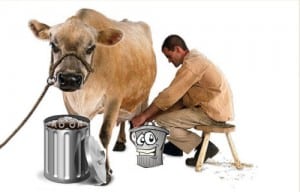
When we do trainings or teach groups about the biology behind the program we always emphasize the importance of getting accurate bodyweights. Almost every equation in the model uses the number that you enter for either Mean Full Body Weight (FBW) or Mean Shrunk Body Weight (SBW) in the cattle screen. And yes, when you enter a cattle type (Lactating Dairy Cow, Replacement Heifer, etc.) there are default values that fill in. The numbers for your farm may be very different from the defaults; the numbers within the animal category need to “make sense” for your farm.
By make sense, we mean they need to add up. For Example—in a lactating cow (which defaults to 60 months), if you change age to 42 months and your farm has an age of 1st calving at 24 m., calving interval of 13 m.; reset your DIM to 150 and days pregnant to 30. This makes mathematical sense.
Recently Lynn was asked to troubleshoot a farm. The nutritionist was working in a heifer group and was having trouble getting the predicted Dry Matter Intake (DMI) to match actual DMI. As he ran the diet through the program, the DMI intake was over-predicted by 4#. On the Output side, ME and MP allowable gain were off—clearly something was not right. A lot of Lynn’s job involves input forensics—what input is skewing the results. The first stop was cattle group. She had been provided with a list of weights and ages for all the groups on the farm. She looked at the information for the 9 month old heifers (the problem group) and Breeding Age heifers (15 m.) noting an input of 24 m as Age at First Calving.
| Group | Weight |
| 9 month old Heifers | 725 |
| 15 month old Heifers (Breeding) | 900 |
If these numbers were correct, the heifers would need to gain less than 1#/day to reach the target weight of 900# at breeding. Additionally, those 700 pound heifers were predicted to be eating about 22# DMI/day. The nutritionist knew they were consuming more like 16#/day. Hmmmm. Where were those animal weights coming from? Did the nutritionist weigh on a scale, tape them, or just eyeball the group?
Working with the premise that the 900# at 15 m. was likely accurate because it fell in line with the reported weight at first calving, Lynn back calculated the weight of the 9 m old heifers using a typical ADG of 1.6#/day—900# – (1.6# x 180 d) = 612#. Using this number as the Mean FBW in the 9 month old group, the predicted DMI was down around 15#/day, close to actual. Lynn then went into the Locations screen and adjusted the temperature from the default of 68°F down to the more likely seasonal 40°F and changed the activity (Flat Distance walked) from default to that of the free-stall at 30% overcrowding. These small changes made the predicted DMI equal the actual DMI. Success!
When Lynn gets a call or email with an issue in a farm file, the first thing she does is check inputs. The rule of GIGO—Garbage In Garbage Out is foremost. In this case, while not necessarily garbage, the information on the group could be questioned. Remember Body Weight is the most important input in the model. Get it right and you are 80% of the way there.

